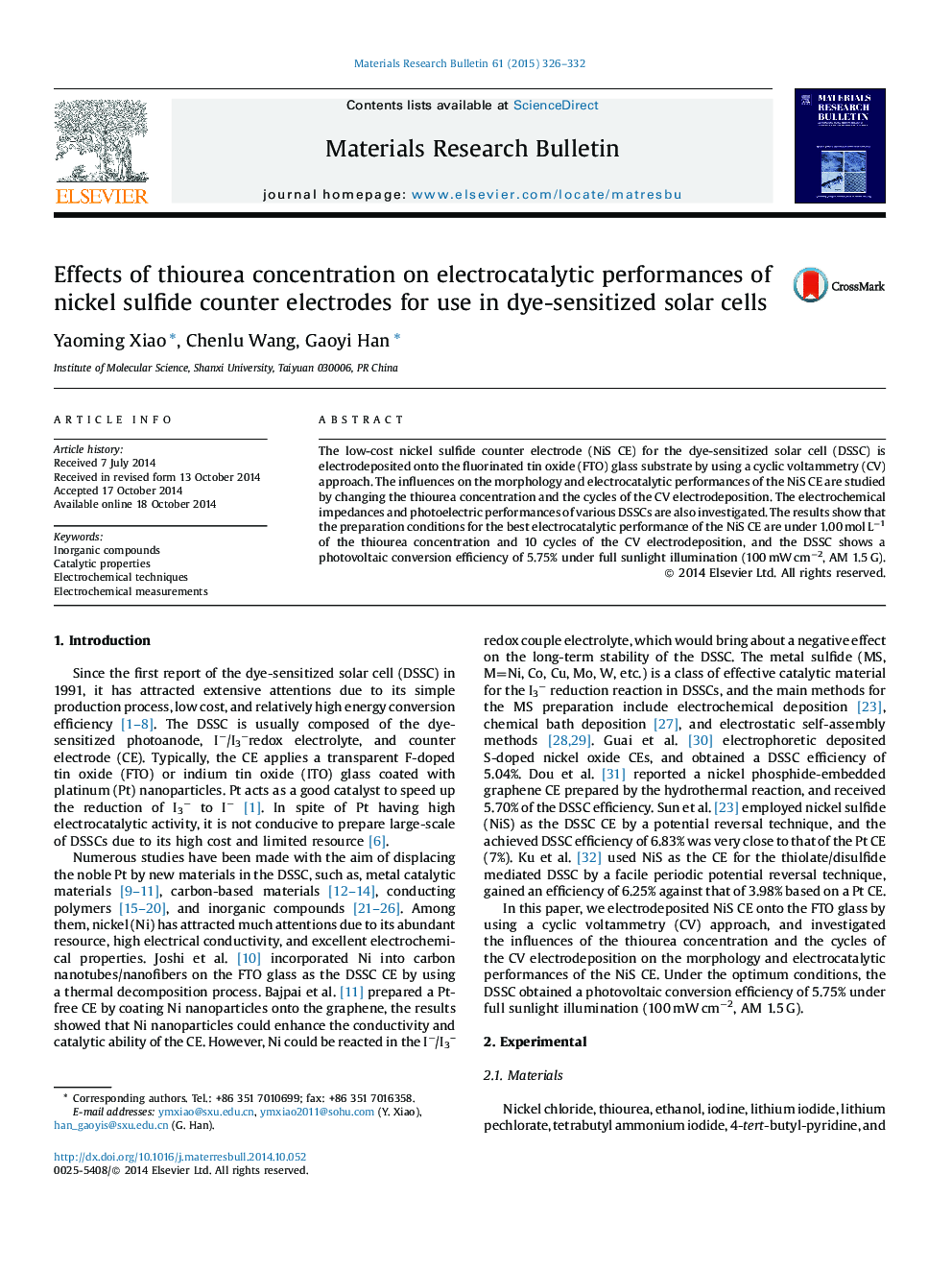| Article ID | Journal | Published Year | Pages | File Type |
|---|---|---|---|---|
| 1488112 | Materials Research Bulletin | 2015 | 7 Pages |
•NiS film is electrodeposited onto the FTO glass by using a cyclic voltammetry approach.•The thiourea concentration has a remarkable effect on the electrodeposition of the NiS CE.•The efficiency of the DSSC with the best NiS counter electrode reaches 5.75%.
The low-cost nickel sulfide counter electrode (NiS CE) for the dye-sensitized solar cell (DSSC) is electrodeposited onto the fluorinated tin oxide (FTO) glass substrate by using a cyclic voltammetry (CV) approach. The influences on the morphology and electrocatalytic performances of the NiS CE are studied by changing the thiourea concentration and the cycles of the CV electrodeposition. The electrochemical impedances and photoelectric performances of various DSSCs are also investigated. The results show that the preparation conditions for the best electrocatalytic performance of the NiS CE are under 1.00 mol L−1 of the thiourea concentration and 10 cycles of the CV electrodeposition, and the DSSC shows a photovoltaic conversion efficiency of 5.75% under full sunlight illumination (100 mW cm−2, AM 1.5 G).
Graphical abstractThe NiS-b CE fabricated by using a cyclic voltammetry approach shows a high electrocatalytic activity with the diffusion coefficient (Dn) of 3.65 × 10−6 cm−2 s−1 for the I−/I3− diffusion on its surface.Figure optionsDownload full-size imageDownload as PowerPoint slide
